Top 8 Rarest Mythological Creatures & their Super Powers: Mythical creatures, also known as legendary creatures, are supernatural animals or hybrid concepts that originate from a variety of mythologies and folklores, including Persian, Greek, European, Celtic, and Norse mythology as well as other traditions.
These beasts can take the form of wolves, birds, serpents, and a wide variety of other hybrid combinations.
The origin of mythical animals can be traced back to stories and traditions that were passed down through generations and featured heroic protagonists.
The majority of these tales are said to have originated from the “hearth,” which means that they were told orally from parents to children during mealtimes by members of families.
Some of these urban legends were invented to serve as cautionary tales for young people and other people about potentially harmful circumstances.
Mythical animals are capable of a wide variety of extraordinary feats, like shapeshifting, killer gaze, super strength, and even the ability to cause a natural disaster.
The sighting of any of these legendary beasts is extremely unlikely because most people won’t believe you even if you do; yet, the following are some of the less well-known examples.
The following is a list of some mythical creatures that are said to be legendary:
Top 8 Rarest Mythological Creatures & their Super Powers 2024
1. Selkies
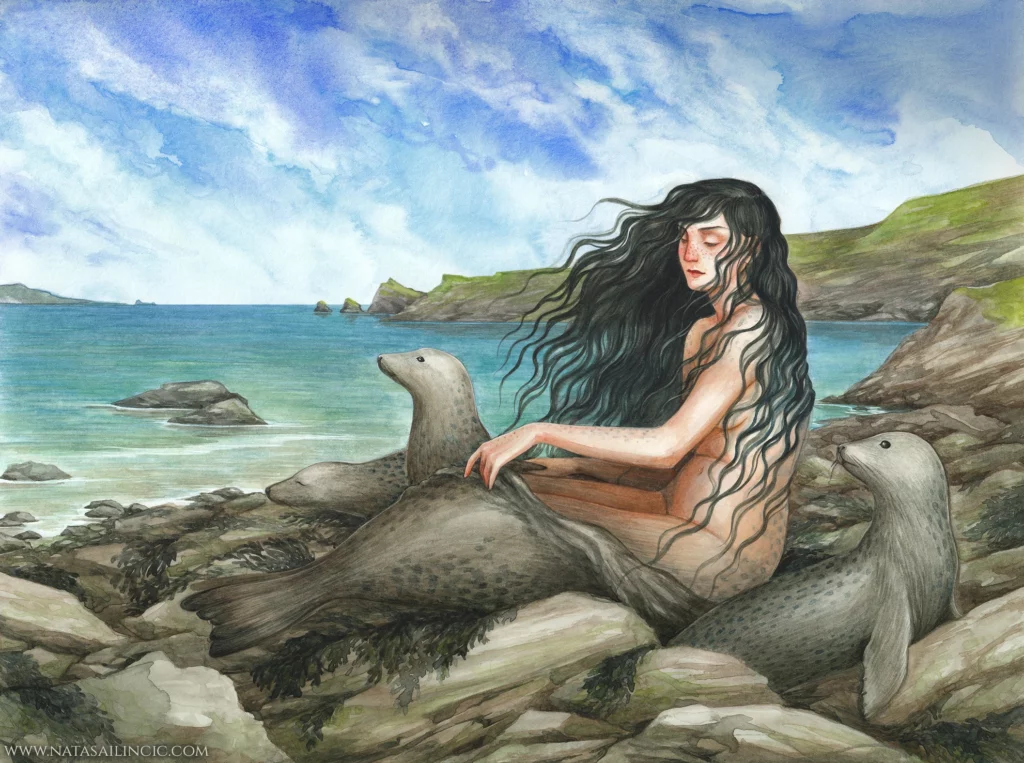
- Origin: Norse & Celtic mythology
- Secret Power: therianthrope/shapeshifting
- Category: Animal-human hybrid
There are a number of different mythologies that contain references to selkies. Some people believe that they originated in Irish and Scottish folklore, while others believe that they originated in Norse and Celtic mythology.
It is stated that these beings are composed of humans and seals in equal parts. When they are on land, they yearn to return to the sea as seals, but when they are at sea, they wish to become humans.
Talk about someone who is never satisfied with what they have! They are able to turn themselves into humans by shedding their seal skin and using their shapeshifting skills. They have a wonderful song even when they are swimming.
The folklore surrounding selkies includes a wide variety of different tragic love tales, romances, and myths.
One of these beliefs held that the offspring of a human mother and a selkie father will have webbed hands and feet.
In other versions of the myth, human lovers would hold the selkie seal skin as a hostage in order to prevent the selkie from going back to the sea.
2. Hippocampus
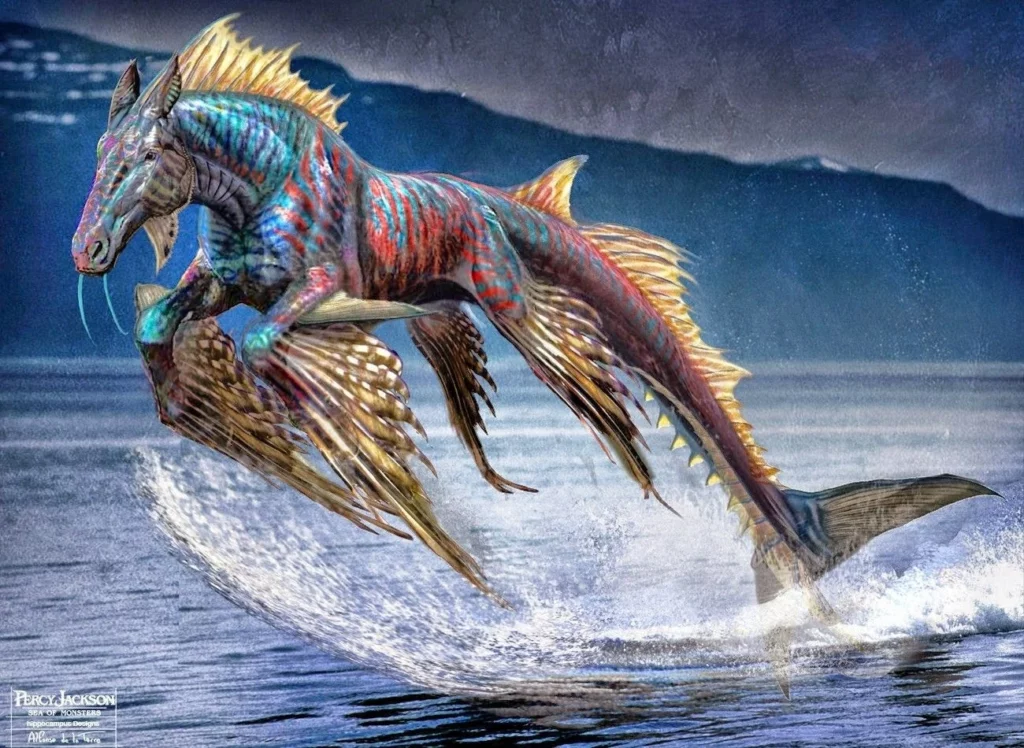
- Origin: Greek Mythology
- Secret Power: Mixed powers of animals
- Category: Mixture of animals
The term’sea monster’ refers to the hippocampus, which has its roots in Greek mythology and can be taken as a vague translation.
This fantastic beast is a composite of two different species, having the head and upper body of a horse and the tail and lower body of a fish.
It was the Hippocampus that was responsible for pulling Poseidon’s chariot. The hippocampus would serve as a mount for the many other gods of the sea.
The ancients believed that Hippocampus represented the fully grown version of the little sea horses that we see today. This monster possessed a diverse set of abilities, allowing it to swim, fly, and ride on the surface of the water.
3. Amarok
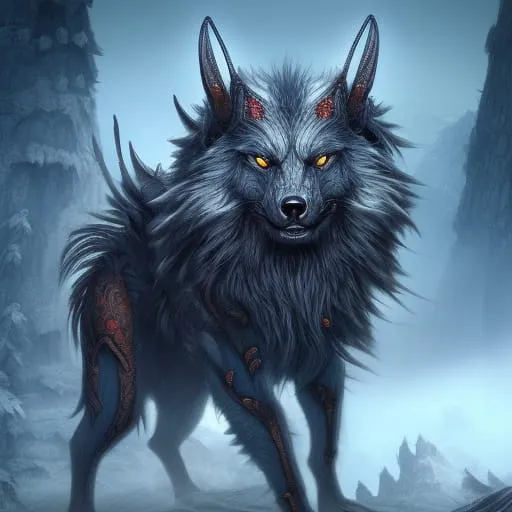
- Origin: Inuit Mythology
- Secret Power: Super Strong
- Category: Giant Wolf
The name Amarok sounds like it was taken straight from the script of a movie! The desolate wastes of the Arctic are home to a gigantic and vicious wolf-like creature known as the huge wolf.
Amarok like to live independently in the bush so that he can pursue his passion for hunting. The Waheela enormous wolves, who are said to have originated in the northern regions of Canada, are another source of inspiration for the mythology.
According to a renowned Danish geologist named Dr. Hinrish Johannes Rink, the term “Amarok” is solely regarded as “fabulous” by Greenlanders, whilst other people who live in the Arctic believe that Amarok is a monster wolf that is larger than humans.
4. Kelpie
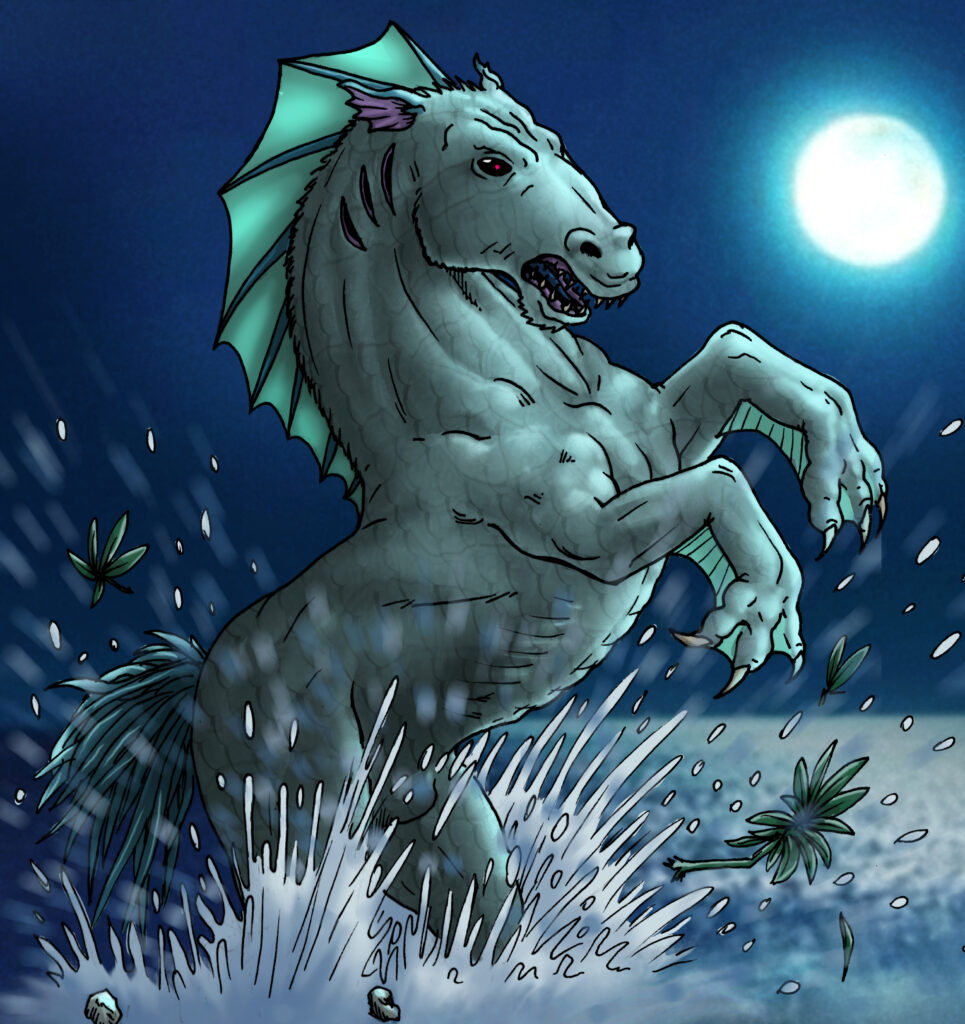
- Origin: Scottish folklore
- Secret Power: Shapeshifting
- Category: Human-horse hybrid
According to Scottish legend, a kelpie is a shapeshifting spirit that is claimed to inhabit the lakes of Scotland and can take on a variety of forms.
Kelpies are fabled creatures that resemble a midnight black horse but have the ability to change into human shape.
According to some traditions, a kelpie, even in its human form, will still have hooves rather than feet. This is said to be tied to the portrayal of Satan in Christian theology.
Kelpie legends are said to be associated with every body of water and coastline in Scotland; the Loch Ness monster is widely regarded as being the most well-known of these creatures.
The majority of the tales were fabricated to discourage children from playing near vast bodies of water and to warn ladies to be aware of unusual males. It is reported that Kelpies get a sick thrill out of drowning their prey and eating their livers afterward.
5. Bake-kujira
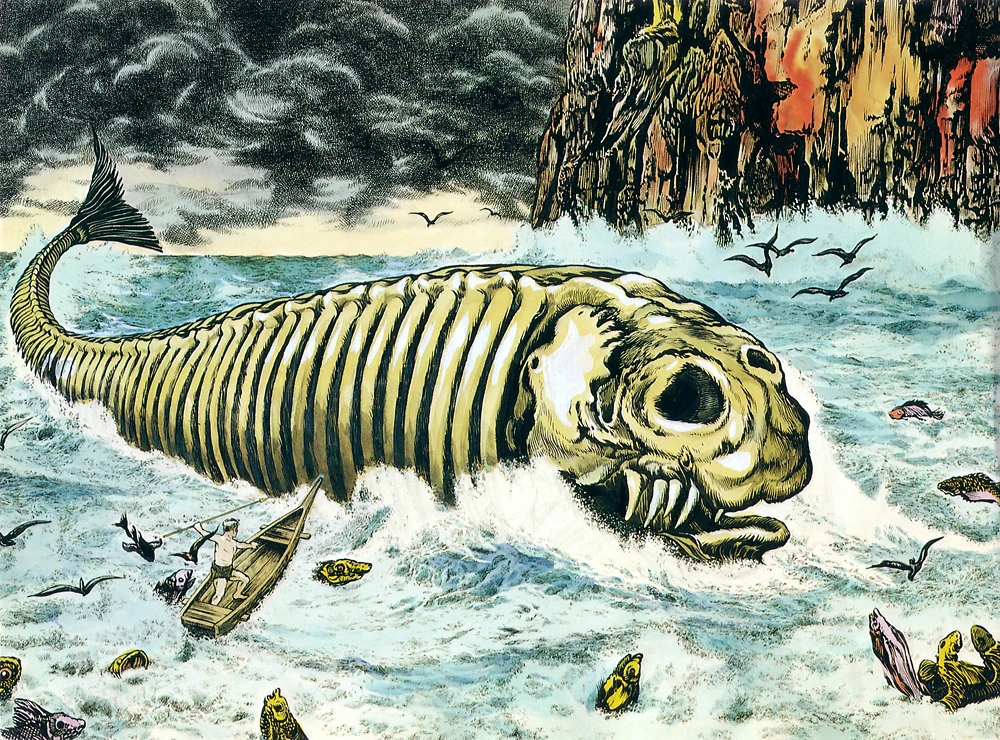
- Origin: Japanese folklore
- Secret Power: Curse
- Category: Skeleton Whale
The term “ghost whale” might be used to describe the Bake-Kujira. The western region of Japan is the origin of the unusual apparition that has become associated with this Japanese mythical creature.
It is reported that odd fish and birds swim alongside the ghost whale at all times. According to urban legends, a fisherman once spotted a Bake-kujira and launched a harpoon at it.
The harpoon went right through the whale’s body since the whale’s body was nothing but a hollow skeleton.
According to still another legend, the sighting of the creature in any part of the world will bring unhappiness and sorrow.
It is also known as “The curse of the whale,” and some people believe that it is responsible for bringing about starvation, fires, calamities, and many diseases.
6. Basilisk
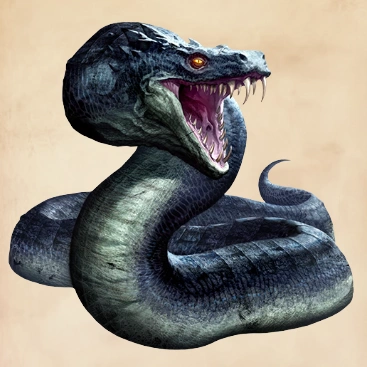
- Origin: European legend
- Secret Power: Killer Gaze
- Category: Reptile
The tale of the basilisk, which is said to have originated in the mythology of Europe, is a fictional account about a legendary lizard.
It is stated that the Basilisk is the king of all serpents and that it can put its prey to death with just a gaze.
Even if its powers are sufficient to kill, it is just a little creature, but wherever it goes, it leaves behind a lethal path of venom.
It is the sole way to utilize weasel odor as a weapon against a basilisk, which is to toss some of it into its hole.
A basilisk’s kryptonite is a weasel’s odor. It is stated that the tale of snakes such as cobras being preyed on by mongooses is where this folklore got its start.
7. Karkadaan
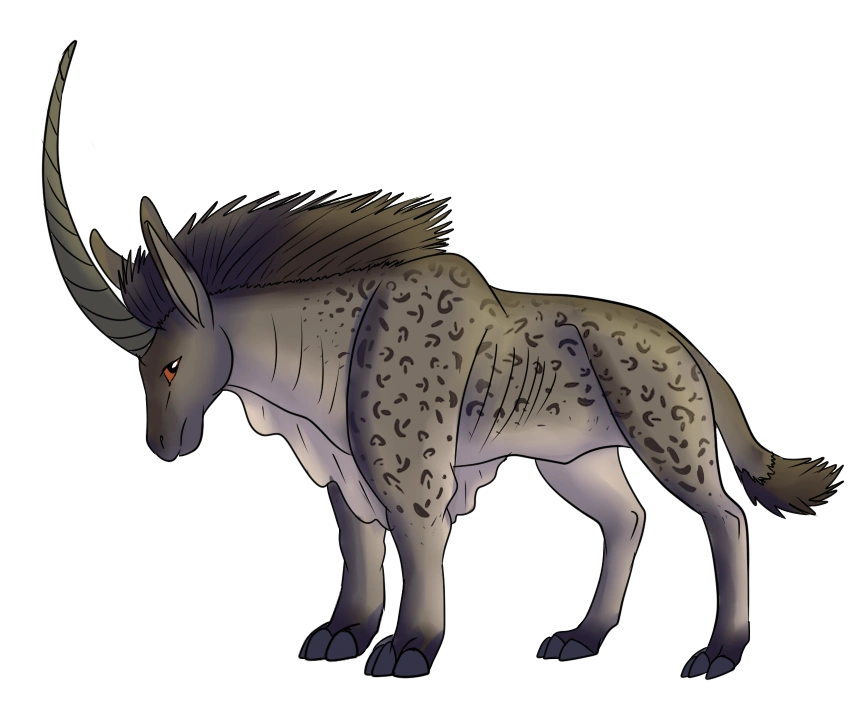
- Origin: Persian legend
- Secret Power: Healing power
- Category: Animal/Unicorn
This tale has its roots in the ancient mythology of Arabia and Iran. The name “Karkadaan” comes from the Arabic phrase “Lord of the Desert.”
This legendary beast formerly called the grassy plains of India and old Persian home. It is said to have been a lord.
Karkadaan is portrayed as having horns similar to those of unicorns, having the ability to be subjugated by virgins, and attacking other kinds of animals.
The fable was only loosely based on the Indian rhinoceros, but subsequently, thanks to the work of writers in the late 10th century, the Karkadaan came to be associated with unusual attributes, and its horn was said to have therapeutic virtues.
8. Pegasus

- Origin: Greek mythology
- Secret Power: The healing power
- Category: Animal/Unicorn
According to Greek mythology, Pegasus is the most well-described of all the legendary mythical creatures.
It is portrayed as a stunning white horse with wings attached to its back. It is stated that he is Poseidon’s son, and just like Poseidon, he is able to exert control over water and make streams from his hooves. He is also said to be a sea monster.
Two of the most well-known rivers in Greece are both called Hippocrene, which can be translated to “Horse Springs.”
According to legend, these rivers were formed when Pegasus’ hooves trampled the ground, causing springs to emerge.
Bellerophon, a brave warrior, was granted permission by Pegasus to ride on his back during the conflict with Chimaera.
Later on, Zeus transformed Pegasus into the now-famous constellation known as the Horse. In modern times, Pegasus has come to symbolize the concept of the independent spirit.
The Pegasus is the most elusive and fabled of all magical creatures in existence.
Top 8 Rarest Mythological Creatures & their Super Powers [UPDATED]- Newshub360.net
Related Post
Credit: www.Newshub360.net
